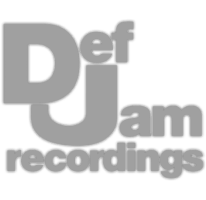Professional Analog Mastering.
Professional Analog Mastering.










For this video, the effects are in no particular order, and if there are some free plugins you use for mastering that I didn’t mention here, let me know about them in the comment section below.
Starting off we have Masterdeck Classic, a compressor and tone shaper by Brainworx - it includes an input and output trim, a dial for adding harmonic distortion, and a foundation knob that amplifies or attenuates bass frequencies. The tone dial corresponds with the 4 tone letters.
My personal favorite is B since it boosts around 300Hz, and 3kHz, great for adding lows without masking vocals. We can switch between soft and hard knee compression, and lastly, we can expand or narrow our stereo image.
Let’s take a listen to it.
This is a great 32-band graphic equalizer that introduces very subtle amplitude changes, perfect for mastering. We can introduce a high-pass filter at 30Hz, change the band slope between 6 and 12dB per octave, and introduce either linear phase processing or oversampling at the bottom.
Let’s listen to it amplifying some of our mix’s low and high frequencies.
Acustica Audio uses impulse responses to emulate various hardware - this unit is great for adding a lot of power to the low end of a mix or individual instrument. The controls are simple, we have a boost dial, attenuation dial, and frequency selector in the middle.
Additionally, we can enable a preamp for some mild harmonic distortion and additional tone shaping. Let’s take a listen.
Arctic is a new free plugin by Acustica audio that combines compression, limiting, and saturation - we can control the input and output, use the slider up top to blend between our 3 types of processing, and alter the response time at the bottom for general slow to fast settings.
Lastly, we can introduce oversampling, which is definitely useful when mastering.
Let’s listen to a blend of its 3 types of processing.
Although this free distortion plugin has an aggressive sound, I’ve found it works well for mastering when the mix dial is low, and the dynamics setting is at its highest. Overdrive, saturate, and hard clip work well for adding harmonics and achieving a louder master.
Let’s listen to the effect being blended in.
Although this plugin emulates a mic preamp, the original preamp it’s based on was originally used for mastering in the 60s. That said, with a low gain value, the pad engaged, and a little amplification to the highs, this works incredibly well at achieving a vintage sound.
Let’s listen and notice if pushed too hard, we get too much distortion for a master.
OAQ was designed with mastering in mind - we can switch between left and right and mid and side, as well as link or delink our channels. The drive function is really subtle, and could be used at its highest level when mastering - additionally, the selectable frequencies are centered for quick changes.
Let’s take a listen to it, with oversampling enabled.
If our mix is sounding off and we don’t know why a correlation meter can help - especially when it’s frequency specific. The Correlometer offers up to 64 monitorable bands, various scales, 4 different bandwidth options, and the ability to change the time it takes for a band to return to unity.
Let’s alter a mix’s correlation and notice how the plugin changes accordingly.
This is a very useful soft-clipper with optional even and odd harmonic distortion, a variable threshold, the ability to drive a signal into it with the input dial, and a useful LUFS meter to the right. The effect is subtle enough to use for mastering, especially with the threshold, input combo.
Let’s listen to it softly clipping our mix.
Last up we have this Air Shelf with 2 bands - the first amplifies 10lHz and above while the second attenuates it. Whereas other Air EQs can be too aggressive for mastering, I’ve found this one is subtle enough to dial in just the right amount of high frequencies.
Additionally, the filters are dynamic, meaning they respond to the incoming signal depending on its relative amplitude. Let’s listen to how this plugin adds some needed clarity and air.